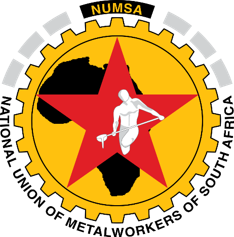South Korea
By examining South Korea we can test all these theories.South Korea is often held up as a model of a developmental state that all third world countries should follow. This is because it achieved high growth rates and developed the country after it attained independence. A number of internal and external factors contributed to its developmental path.Internally the country shifted from an import substitution industrializing strategy to an export-led developmental strategy. This was prompted by a social pact between Korean industrialists and the military Junta (the military were in charge of the government). The social pact worked because industrial capital agreed to be disciplined by the Junta. In return the Junta pledged to invest in infrastructure and was prepared to be used as an instrument to negotiate deals on behalf of industrial capital.
Moreover, externally, the global class balance of forces was reconfigured with the US emerging as the global hegemonic power after the end of the Second World War. With its policy of containing the Soviet Union, it used funds from the Marshall Plan and invested in South Korea. It also opened its markets to Korean firms. In return Koreans allowed United States to build its military camps there to police East Asia.
More importantly, and this is where Fine’s point about a state not being “˜class-neutral’ is relevant, the Junta agreed to use state repressive machinery, including legislation, to undermine the labour movement so that industrial capital could develop unhindered.As Hart-Landsberg puts it: “Although South Korea is widely celebrated as an economic model, working people paid a high price for their country’s economic growth. Military dictatorship kept workers disorganised and on the defensive for most part of the 1960s and 1970s through control of the only legal labour federation, a maze of ever more restrictive labour laws and increasingly violent intervention, into labour disputes by the Korean Central Intelligence Agency and special labour police”. As the old man Karl Marx said: “The history of mankind is the history of class struggle.” South Korean workers did not need to read this. It was their painful experience. Unfortunately history is written and narrated by the victors. In this scheme of things history was made by powerful individuals – kings, queens and presidents – not by ordinary men and women.Fine would also disagree with other scholars in South Africa, such as Edigheji, who believe the “coherence and autonomy of the [Korean] state is [another] important institutional lesson..”Edigheji’s emphasis is that the Korean state had autonomy from social forces and therefore was able to govern using “meritocratic (on merit) recruitment, [with] predictable career paths for top economic bureaucrats and the presence of super ministries; these enable[d] the state to have the in-house capacity to be able to independently formulate and implement economic policy without being captured by societal interests.”Power was centralised in the presidency for example with:
The Economic Planning Board as the administrative core of industrial planning
The department of finance, which coordinated annual expenditure from different departments, making submissions to the office of planning coordination which was accountable to the Economic Planning Board (EPB)
Quarterly reports being submitted to EPB which was accountable to the Presidency.
However, Fine argues “for a theory of the state that locates its policies in terms of the complex outcome of the class interests that act upon it and in turn lead to the strengthening, weakening, and even the transformation of the underlying structure”. Evidence of these class forces at play is found in these relationships at an industrial strategy level:
The Korean state was using industrial licensing to discipline industrial capital while at the same time providing it with incentives
The Korean Automobile Association, Korean Trade Association, and the Electronics Industry Association of Korea were the organised voices of Korean industrial capital
However, there was no organised voice of labour in this social pact. Who was to defend the interests of workers in this pact? This is the point that does not come out to those who are praise singers of the Korean model. On a positive note, the most important contributor to the success of South Korea was the fact that the financial sector was nationalised and this was used as leverage to discipline capital.The exclusion of labour in the pact between industrial capital and the Junta led to the deterioration of the conditions of workers, which later triggered rebellion from workers. According to Hart-Landsberg “South Korea’s export growth strategy had benefited greatly from a highly exploitative labour regime”. He further says “over time, however, industrialisation created large working class-dominated cities and massive industrial enterprises that eventually encouraged labour solidarity and an explosion of labour organisation, massive strike waves swept the country in 1987 and 1988 resulting in significant wage increases”.These working class struggles and wage victories combined with international pressures on the economy of South Korea led to South Korean industrial capital refusing to accept continued state direction and control of its activities. By this time industrial capital had grown powerful and was strong enough to resist state intervention in the economy. This led to South Korean capital launching an attack on the disciplinary institutions of the state.As Uncle MARX said: “the history of human kind is the history of class struggle!”
Discussion questions:In whose class interest was state intervention in South Korea? What kind of an accumulation path did the South Korean State pursue? Was it accumulation from above or below? Do you think South Africa is a developmental state?Whose class interests does the current developmental path favour? Why?
